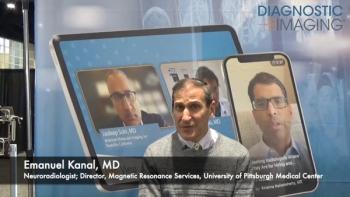
Brain Imaging Could Be Used to Personalize Treatment for Major Depression
Machine learning can pinpoint specific activity patterns in the brain that could lead to more targeted therapies.
Coupling machine learning with resting-state functional MRI (rs-fMRI) can identify unique patterns of coordinated activity in the brains of people who have major depressive disorder.
Even when investigators used different protocols, they can still pinpoint these networks that are working together, according to new research. A team of investigators from the Advanced Telecommunications Research Institutes International in Kyoto, Japan published their work in PLOS Biology on Dec. 7.
Diagnosing major depression is not difficult, said the team led by cognitive neuroscience researcher Ayumu Yamashita, but treating it can be. If providers were better able to understand the brain networks that are connected to depression, they might be able to offer better treatments.
To date, machine-learning algorithms have been applied to finding such associations in people with depression, but these studies have had shortcomings. Either they have focused only on specific subtypes of depression or they have not taken the differences in brain imaging protocols that occur between healthcare institutions into account, the team said.
In an effort to side-step these challenges, Yamashita’s team implemented machine learning to evaluate brain network data from 713 people – 149 individuals in the cohort had major depression. To collect the data, they used rs-fMRI, a technique that detects brain activity and creates images that shine a light on coordinated activity – functional connections – between different parts of the brain. For this study, the imaging was performed at different institutions, using different protocols.
Based on the team’s analysis, the machine learning method was able to pinpoint key functional connections in the imaging data that be considered a brain network signature for major depression. In fact, when the researchers applied the new signature to the rs-fMRI data collected from the various institutions from 521 other people, they were able to reach 70-percent accuracy in identifying which individuals had major depressive disorder.
Ultimately, the researcher said, they hope that this newly identified brain network signature can successfully be applied to different imaging protocols. If so, the door opens for it to be a foundation for unearthing additional brain network patterns that are also associated with depression subtypes. It could also reveal other relationships between depression and other disorders, potentially aiding in matching patients to more effective, personalized treatment, as well as inform the development of additional, new therapies.
For more coverage based on industry expert insights and research, subscribe to the Diagnostic Imaging e-Newsletter
Newsletter
Stay at the forefront of radiology with the Diagnostic Imaging newsletter, delivering the latest news, clinical insights, and imaging advancements for today’s radiologists.




























